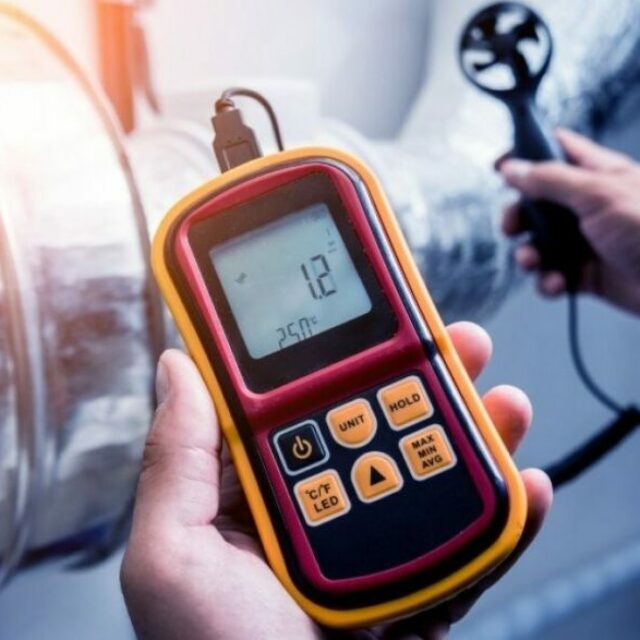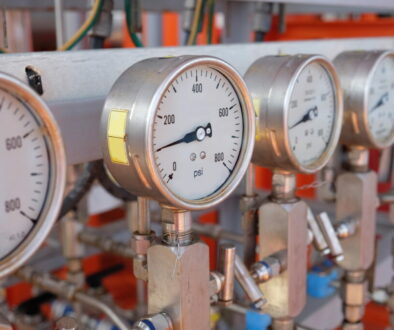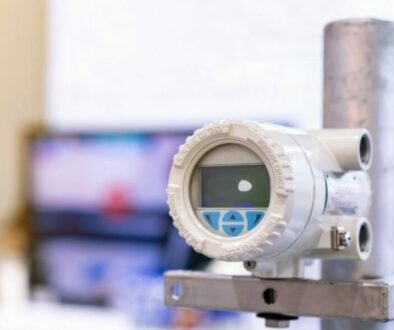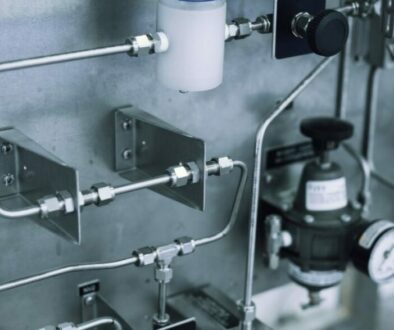The Components of a Digital Flow Meter
Digital flow meters are high-tech devices with a customizable, touch screen interface. They’re used for gauging and displaying qualities like mass flow rate, volumetric flow rate, gas temperature, atmospheric pressure, and gas pressure. The components of a digital flow meter—anemometers, thermistors, gauge pressure transducers, and absolute pressure transducers—all serve unique roles in its operation.
The Components
In a digital flow meter, the four primary components act as sensors. They detect, calculate, and convert their respective measurements accordingly.
The three internal sensors, which are in direct contact with the flow, are anemometers, thermistors, and gauge pressure transducers. They measure mass flow, gas temperature, and gas/back pressure respectively.
The one external sensor, the absolute pressure transducer, generates pressure readings that exclude the influence of atmospheric pressure.
Anemometer
Anemometers are instruments capable of measuring the speed and velocity of wind, along with the movement of gas currents through ductwork.
Hotwire anemometers are one of the more commonly used types.
As the name suggests, wires, heated to an unfluctuating temperature via a regulating switch, are exposed to the current. They calculate the amount of current required to keep themselves at a constant temperature, or alternatively, how much heat loss results from the existing current.
Thermistor
Thermistors measure, monitor, and control temperature fluctuations. They’re electrical resistors with a resistance that’s heavily dependent on temperature. Thermistors can be used as inrush current limiters, self-resetting overcurrent protectors, or, in the case of digital flow meters, temperature sensors.
Gauge Pressure Transducer
Gauge pressure transducers are another component of a digital flow meter. They offer comparisons between a system’s pressure measurement and the local atmospheric pressure. By determining differences between the two pressures, they’re able to detect excessive (and potentially harmful) amounts of gas and back pressure.
Absolute Pressure Transducer
Absolute pressure transducers, unlike gauge pressure transducers, produce readings unaffected by the local atmospheric pressure.
Regular pressure sensors measure deformities caused by differences between the process pressure and atmospheric pressure.
Absolute pressure transducers, on the other hand, are permanently sealed and kept away from the flow path. This deliberate isolation allows them to utilize a perfect vacuum as their reference and zero points, which ensures their measurements remain uninfluenced by atmospheric pressure.
Readings taken from these four sensors determine mass flow, then convert it into volumetric flow according to the current environmental density and the system’s backpressure.
Kelly Pneumatics carries valves, electronic regulators, and mass flow meters—digital air flow meters included. If you’re searching for custom flow and pressure control solutions, consider browsing through our inventory.




